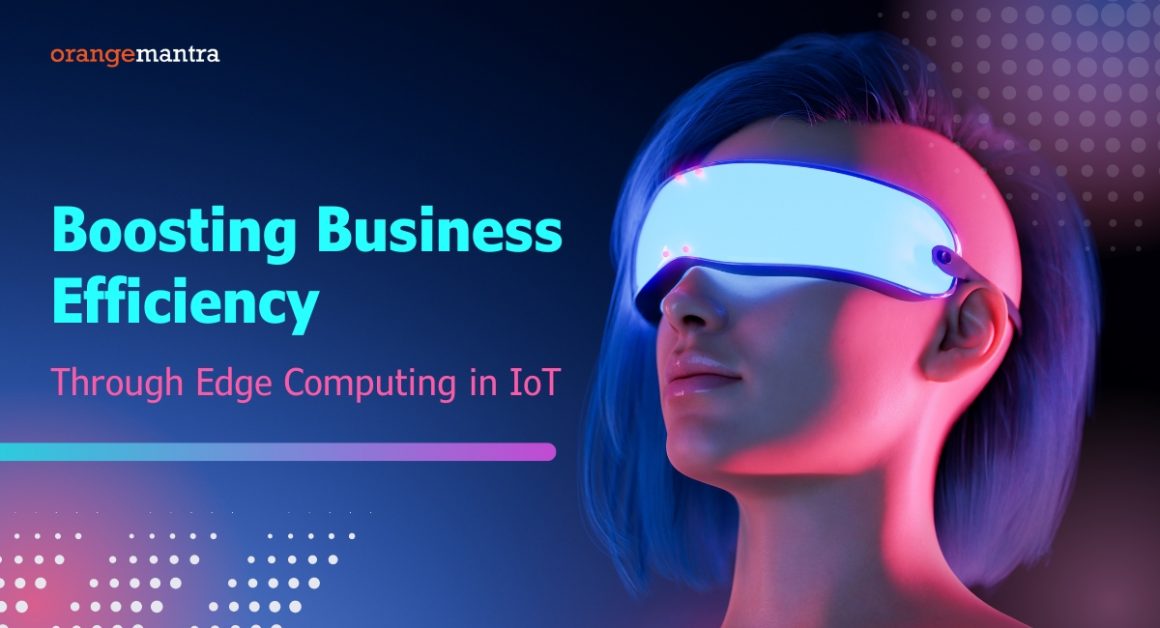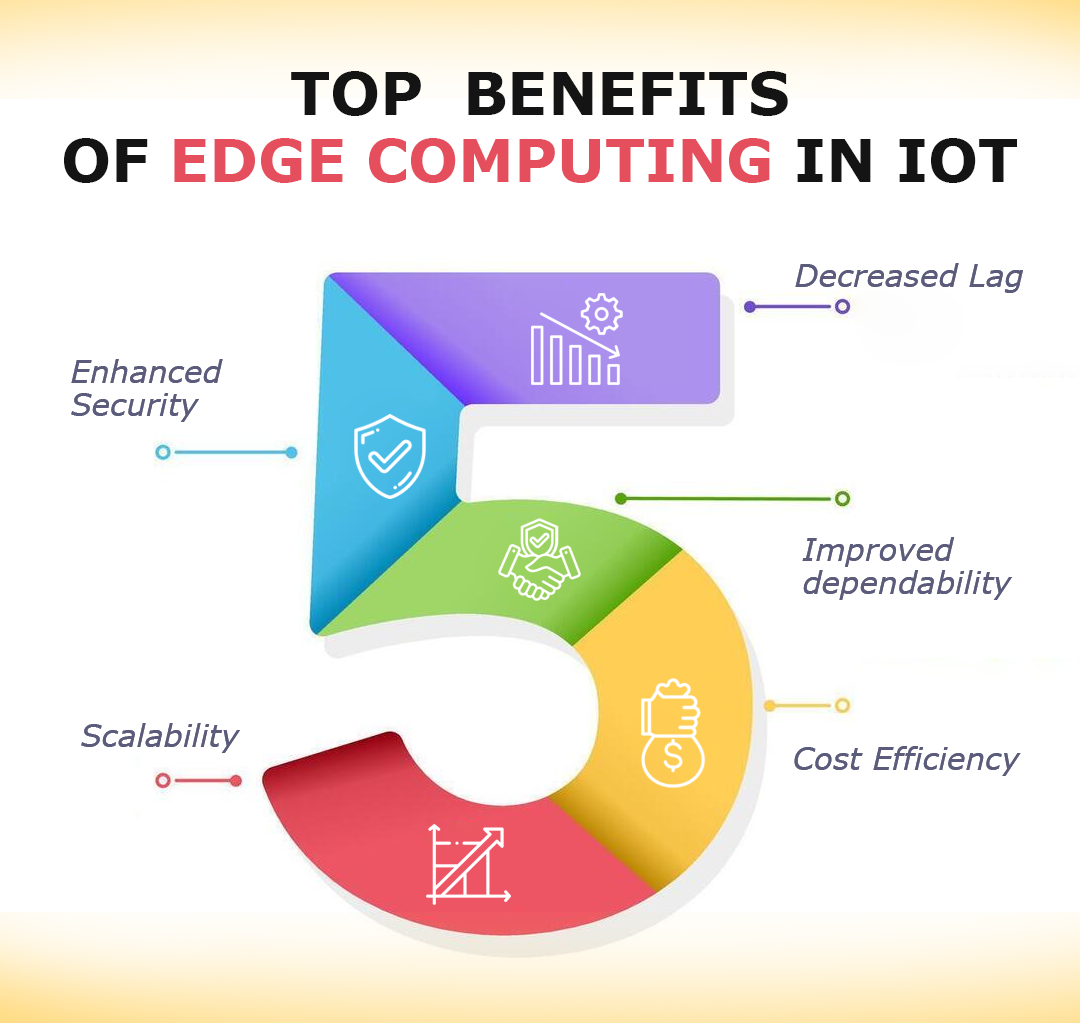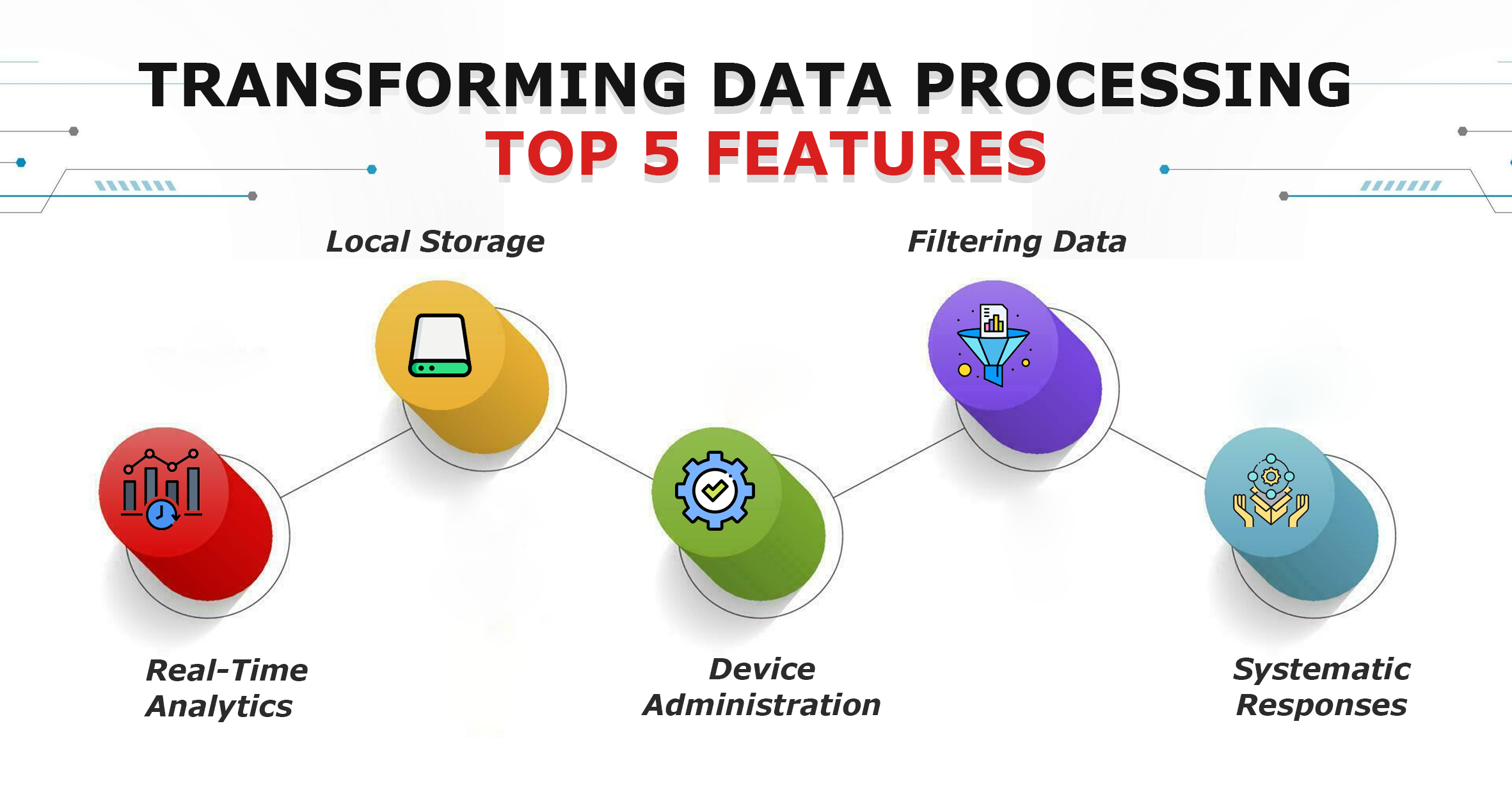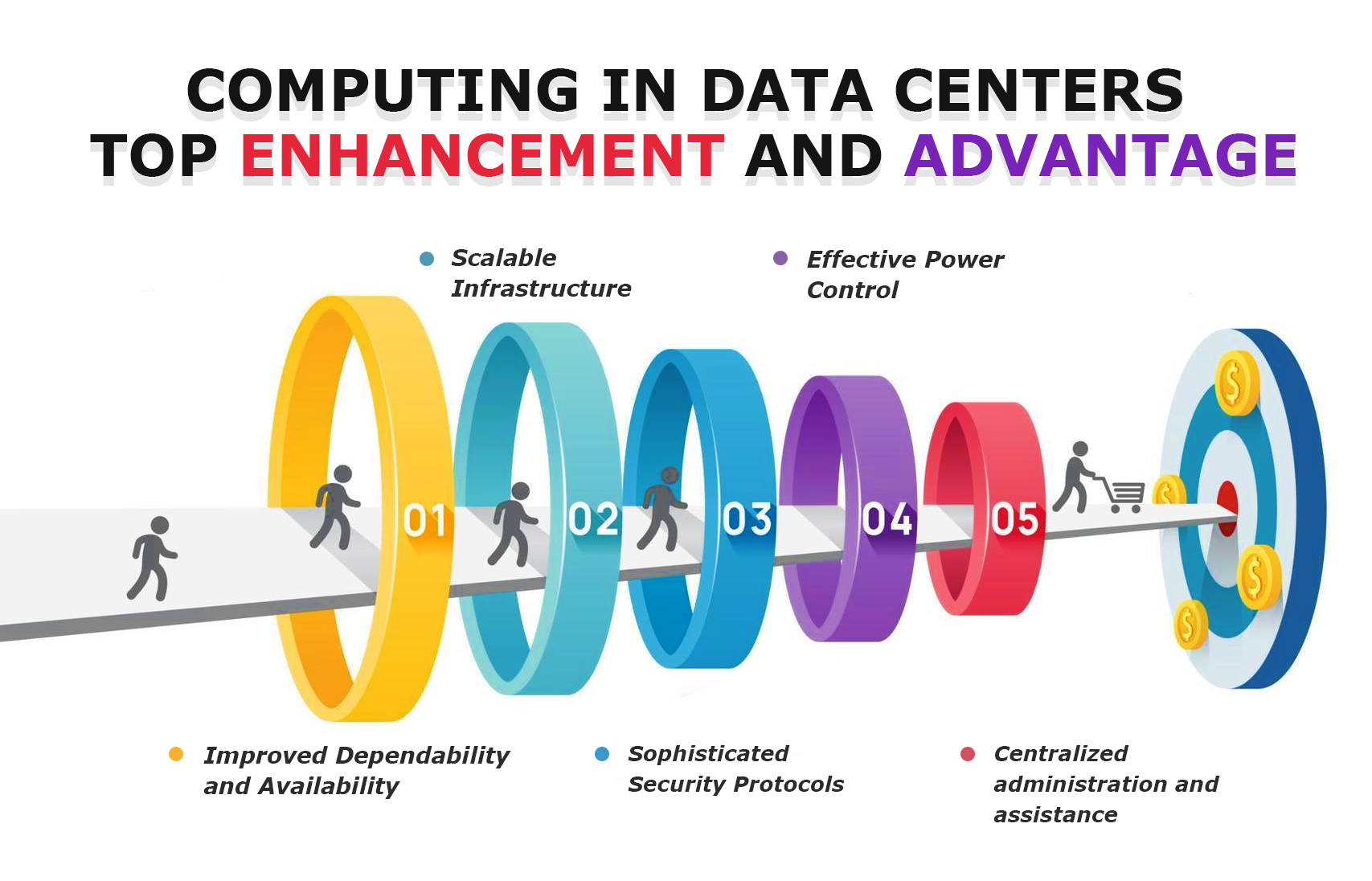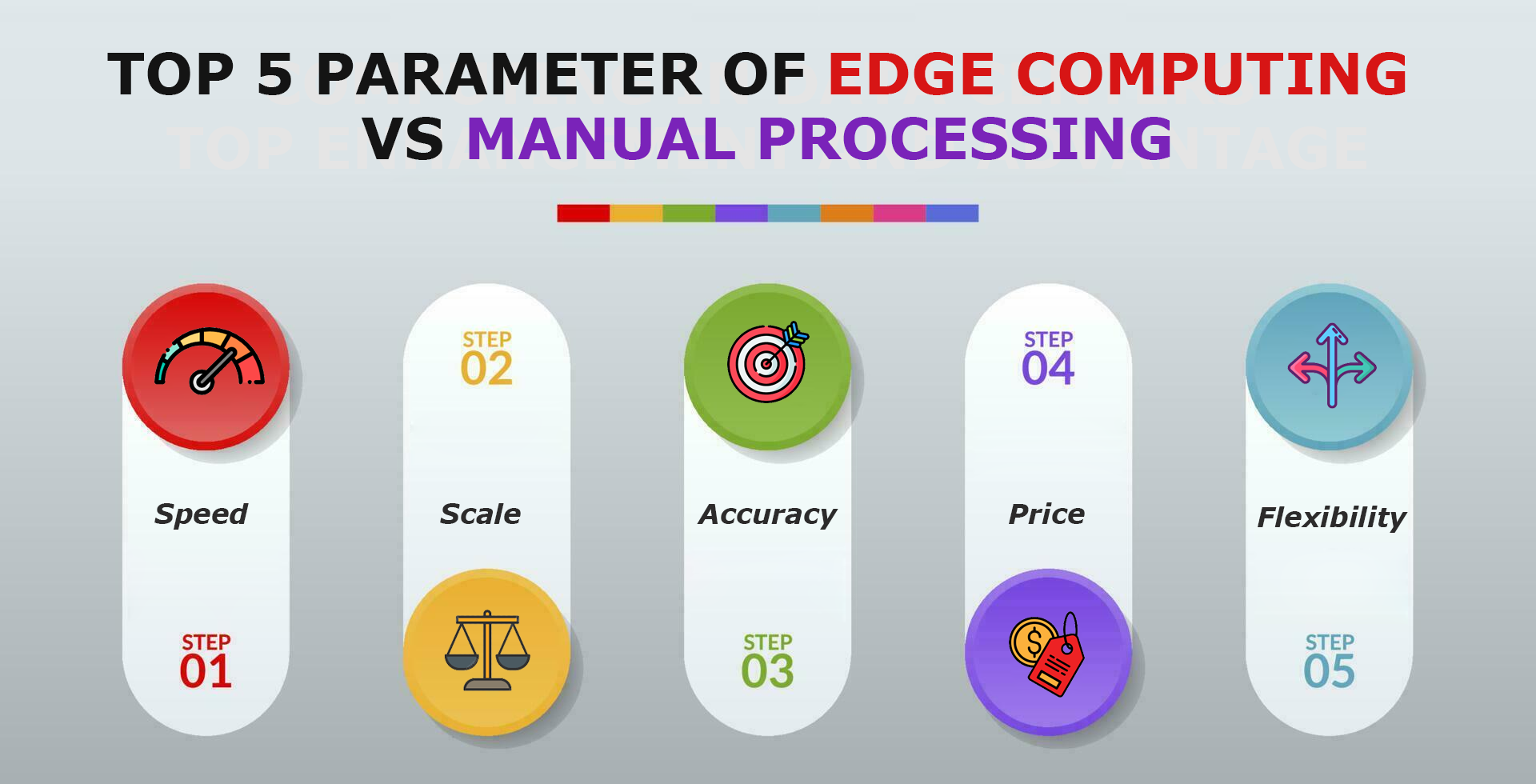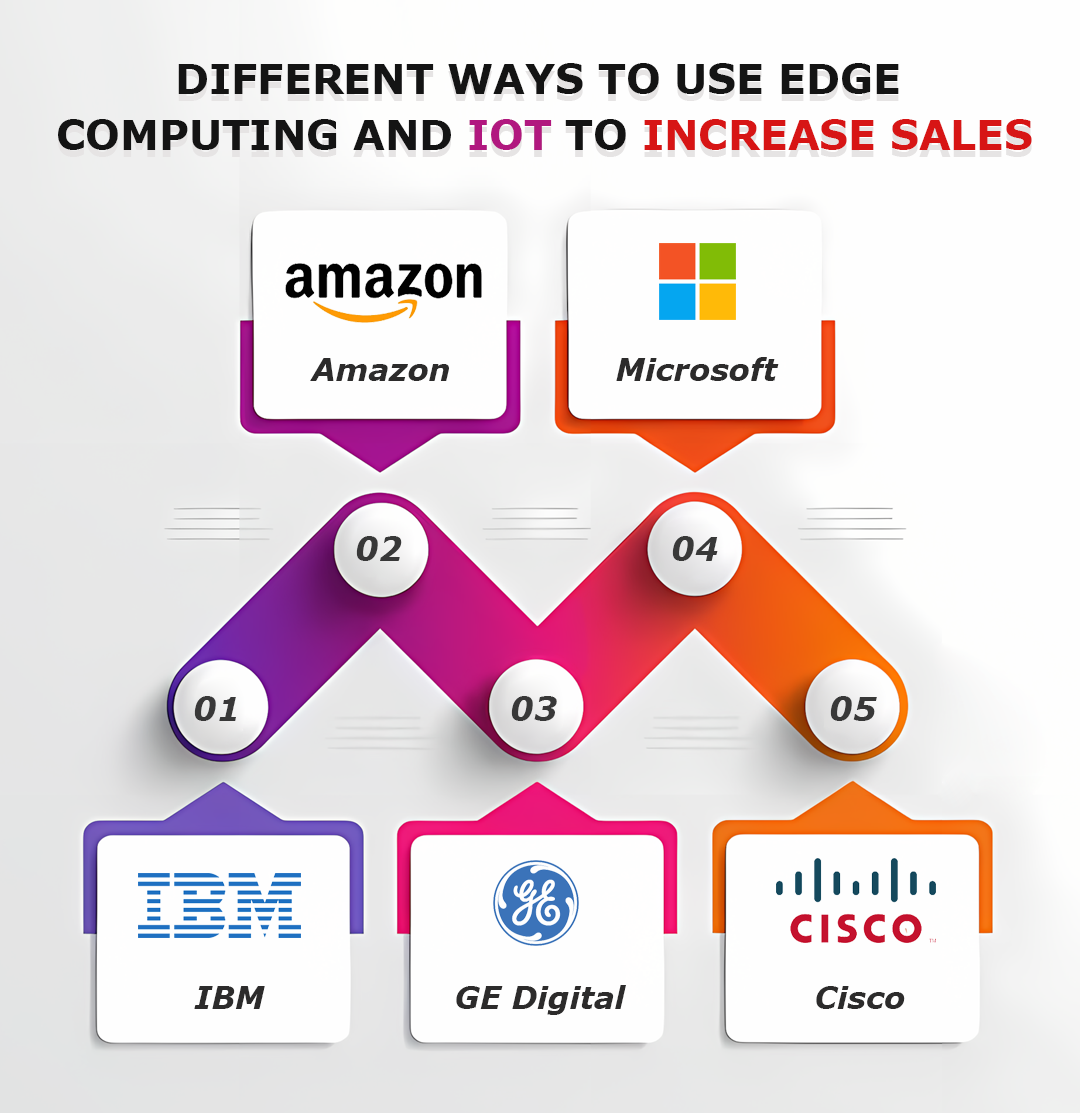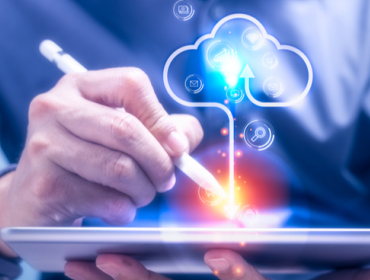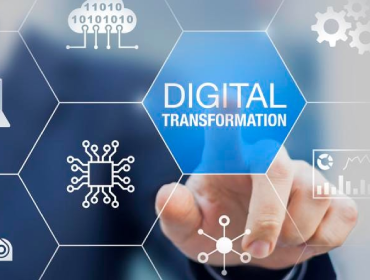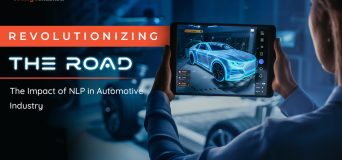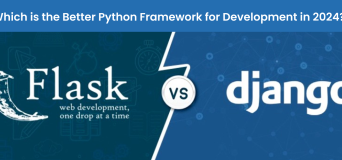Real-time data processing in 2024’s continuously changing digital ecosystem is not only advantageous but also essential. When combined with the Internet of Things (IoT), edge computing is revolutionizing the way that organizations handle and use data. Integrating this technology delivers unmatched speed and efficiency, with the worldwide edge computing industry predicted to reach $22 billion this year. Edge Computing in IoT remains ahead of the competition and alters processes, company leaders must use real-time data and decision-making skills.
By processing data closer to its source, edge computing lowers latency and boosts security. Edge Computing in IoT is critical as the proliferation of IoT devices spurs corporate innovation by providing timely information. Recent studies show that 60% of businesses are using edge computing in conjunction with IoT Development Companies to improve customer experiences and operational efficiency. This connection offers firms a competitive advantage by facilitating quick reactions and optimal performance.
Top 5 Edge Computing in IoT Benefits: Enhancing Efficiency with 90% Faster Data Processing
Decreased Lag
Instant analytics and quicker decision-making are two benefits that firms get from real-time data processing at the edge. Businesses estimate a 75% decrease in latency as of 2024 when compared to cloud-based solutions.
Enhanced Security
By reducing the risks associated with data transfer, edge computing improves security. Companies that use edge solutions have a 50% lower rate of data breach occurrences, according to recent statistics.
Improved Dependability
Nearly 80% of firms report improved system dependability thanks to edge computing, which guarantees uninterrupted operation even in the event of problems with central servers.
Cost Efficiency
Best IoT Integration Services companies claim up to 40% lower operating costs because of savings on data transfer and cloud storage.
Scalability
Edge Computing in IoT solutions provides flexibility without requiring major infrastructure modifications, and they scale well with expanding IoT installations.
Top Edge Computing in IoT Features: Transforming Data Processing
Real-Time Analytics
Compared to standard cloud processing, edge computing delivers insights up to 90% quicker by processing and analyzing data at the source. This real-time capacity can cut latency by up to 50 milliseconds, according to 2024 research by Gartner. Edge Computing in IoT is important for time-sensitive applications like real-time industrial monitoring and driverless cars.
Local Storage
Local data storage, made possible by edge computing, allows for 70% quicker data retrieval than cloud storage. This can lead to considerable cost savings; according to an IDC analysis from 2024, local storage solutions can help enterprises cut their data storage expenses by around 30%.
Device Administration
Edge computing simplifies the efficient administration of IoT devices. According to Forrester’s research from 2024, edge solutions can lower the overhead associated with device administration by 40%, which facilitates the integration. Industrial IT Solutions upkeep devices across large networks, such as those seen in industrial IoT systems or smart cities.
Filtering Data
Edge computing reduces the amount of data that must be sent by up to 60% by processing and filtering data locally. Edge Computing in IoT improves performance and uses less bandwidth. According to a recent Aberdeen Group report, edge computing can increase data processing efficiency by 45%. AI Software Development Company which is important for applications that produce enormous amounts of data, including environmental monitoring.
Systematic Responses
By enabling quick decisions based on real-time data, edge computing increases operational effectiveness. According to a McKinsey report from 2024, companies using edge computing to automate reactions can increase operational efficiency by as much as 35%. This is important for dynamic contexts like real-time asset management and smart manufacturing.
Top 5 Business Benefits of Edge Computing in Data Centers
Improved Dependability and Availability
High dependability and uptime are ensured for edge computing infrastructure by the stable environment that data centers provide. Data centers achieve 99.999% uptime on average, according to a 2024 research by Uptime Institute, as opposed to the 99.9% usually seen in smaller, scattered edge configurations. This means that there will be less downtime and continuous service.
Scalable Infrastructure
Data centers provide expandable resources to accommodate increasing needs. Data centers can swiftly expand to meet the demands of growing data volumes and processing power, as stated by Statista in 2024. This adaptability helps to meet the dynamic requirements of edge computing.
Sophisticated Security Protocols
Artificial Intelligence Solutions with modern security mechanisms, such as cyber defenses, access controls, and physical security, are installed in data centers. According to a Deloitte report from 2024, 85% of data centers have security measures that meet or beyond industry requirements, greatly lowering the danger of data breaches and illegal access.
Effective Power Control
Data centers often make use of cutting-edge cooling and power distribution technologies in their architecture to effectively control power usage. Edge Computing in IoT data centers can achieve up to 40% more energy efficiency than typical edge computing configurations, which can lead to cost savings and sustainability, according to a 2024 assessment by the Green Electronics Council.
Centralized Administration & Assistance
IoT Smart App Development data centers provide edge computing infrastructure centralized administration and technical assistance. According to an IDC report from 2024, centralized management decreases operational complexity and support costs by 30%, freeing up resources for firms to use professional assistance while concentrating on their core competencies.
Edge Computing vs Manual Processing: Enhancing IoT Efficiency and Real-Time Insights
Speed
When data is processed in real-time using edge computing, insights can be obtained 90% quicker than with manual processing, which has handling and analysis delays.
Scale
With the capacity to scale as data quantities and complexity increase, edge computing develops smoothly, in contrast to manual systems that struggle and slow down.
Accuracy
Smart Retail IoT Solutions compared to manual approaches that are prone to errors, automated edge computing minimizes human error and produces more exact data.
Price
Because it requires less data transmission and storage, edge computing is more cost-effective than manual processing, which has greater costs because it handles data more often.
Flexibility
While manual systems need considerable reconfiguration and modifications, edge computing easily adjusts to new requirements.
Top Companies Leveraging Edge Computing and IoT for Innovation and Growth
Real-time data processing and improved operational efficiency are made possible by the convergence of edge computing and IoT, which is transforming several sectors. Smart asset-tracking businesses can gain a substantial edge by using these technologies as they fight to remain competitive.
Here’s a look at how top companies are using edge computing, which is fast becoming a key component of the current digital revolution.
IBM
Specifically, IBM’s Edge Application Manager enables dealing with massive IoT data, as it is aimed at effective app management and deployment across the edge.
- Due to the ability of IBM solution to scale up and handle several workloads across various edge devices, it has enhanced operational efficiency by 50% by 2024.
- High performance and reliability of the system are highly essential to sectors requiring real-time analytics for rapid decision-making.
Amazon
AWS Greengrass is one of the best examples of the capabilities of edge computing associated with real-time processing. It is an extension of AWS functionality and capabilities on a local connected device; the users can perform data processing and analysis on the local device whilst retaining cloud storage, analytics, and administrative functions.
- In AWS Greengrass V2, between now and 2024, up to 80% gains in data processing should be attainable.
- Which in turn will enhance Amazon’s capabilities to more accurately control and manage IoT devices throughout its expansive ecosystem.
GE Digital
GE Digital enhances the IIoT applications with a focus on optimizing both computation and transmission with the aid of edge computing.
- By 2024, this technology will help GE’s edge solutions to reduce maintenance costs by 30% and increase uptime.
- By Edge Computing in IoT the types of equipment increase by 20%: the role of edge computing in reengineering industrial operations.
Microsoft
Microsoft’s Azure IoT Edge is a scalable solution that brings cloud intelligence to edge devices. Microsoft Azure IoT Edge can let businesses send their cloud workloads to edge devices with the help of computing local data with real-time responses.
- By 2024, Azure IoT Edge will have delivered capabilities to millions of devices across the globe, ensuring the protection of sensitive data.
- Edge Computing in IoT also reduces response time and makes it possible to handle complex IoT events.
Cisco
Cisco shows that IoT integration favors network performance and protection through edge computing solutions.
- Edge technologies in Cisco, for instance, Cisco Edge Intelligence, allow immediate action in case of a threat or comprise analytical functions.
- By the year 2024, Cisco’s technologies have improved total network productivity and cut the response time for network security by 40%.
Success Stories of Implementing Edge Computing and IoT Solutions
Fleet Management App & Captive Community for an EV-Powered Company
Our client, a preeminent logistics firm, had difficulties enhancing internal communication and optimizing EV fleet operations. They need a way to provide drivers and fleet management with improved ways to collaborate, as well as real-time data on vehicle issues. The main challenge was combining human and automated processes with real-time data synchronization.
Their logistical procedures were revolutionized by the fleet management software we designed, which was driven by IoT. Through a live chat function, the software allowed for real-time collaboration and also gave administrators access to an extensive dashboard. Furthermore, a captive community increased participation and made it easier for managers and drivers to work together.
The results were astounding: delivery times were shortened by 27%, car failures were reduced by 66%, and drivers, fleet managers, and technicians all worked more efficiently overall. Additionally, the platform improved communication and branding, streamlining processes and increasing data-drivenness.
Feature-Rich Business Website for IoTechWorld
The biggest drone maker in India, IoTechWorld, battled with a poor web presence that failed to get customers in or properly display their goods. They need a website to showcase their wide selection of products, enhance user experience, and help small farmers with education.
We created a feature-rich, dynamic website with 360-degree product views, crisp photos, and educational videos. A community forum, live chat, drone customization tools, and an instructional center with FAQs and lessons were included. For seamless smartphone navigation, the website was optimized for mobile devices.
Increased conversion rates, improved user interaction, favorable client feedback, and an increase in mobile traffic were all brought about by the redesigned website. As a result, IoTechWorld’s web presence was completely changed, solidifying its status as a pioneer in the drone sector and increasing client retention.
IoT-Enabled Custom Software for Smart Workspace Solutions Pioneer
To connect IoT technologies and provide users control over office operations like scheduling meetings, managing access, and controlling appliances, Space Matrix needs a mobile app. Integrating IoT devices into their traditional infrastructure while maintaining data security was a difficulty.
OrangeMantra created a unique IoT-enabled workplace management tool with real-time automation. In addition to providing statistics to maximize space utilization, the Smart Warehouse Management Solutions software included internal navigation, parking management, and meeting schedulers.
The solution made Space Matrix a leader in intelligent, environmentally friendly workplaces by increasing productivity, lowering energy use, and improving employee happiness.
Building Delhi-NCR’s First School Automation Solution with IoT
There were several obstacles to overcome while putting into place an IoT-based system for monitoring and automating student attendance. It took extensive planning and development to integrate sensors and cameras for data collection and processing. To guarantee real-time monitoring, and to provide comprehensive analytics reports. Furthermore, it was essential to comprehend user behavior to create a user-friendly system and guarantee data security.
The first IoT-powered student attendance and monitoring system in Delhi-NCR was created by us. The system tracked students’ movements from the school bus to their homes and automated the recording of attendance. In addition to offering staff and parents real-time information, it included analytics tools that allowed for the creation of thorough reports. Through rigorous testing and research, the technology guaranteed reliable data collecting and user-friendly interfaces.
With real-time monitoring, the IoT solution greatly improved student security. Transparency increased parental confidence, and the system facilitated school administration. Freeing up instructors to concentrate more on their pedagogical duties. This ground-breaking technology established a standard for school automation in the area.
The Top Ways to Use Edge Computing and IoT to Increase Sales and Revenue
Enhanced Customer Experiences
Make use of real-time data to better serve customers and increase satisfaction, which will encourage recommendations and repeat business.
Operational Efficiency
Reduce downtime and automate procedures to save costs and boost output.
New Revenue Streams
Emerging tech solutions create novel goods and services by using edge computing power and real-time information.
Data-Driven Decision Making
Align resources and sales tactics more effectively by using precise, up-to-date data to influence strategic choices.
Improved Product Performance
Track and improve product performance to build a loyal and satisfied consumer base.
Wrapping Things Up
For companies looking to improve real-time data processing, integrating edge computing with IoT is revolutionary. The technology is becoming more and more advantageous in terms of speed, security, and operational effectiveness. Digital Transformation Company in India helps businesses remain ahead of the curve and spur development. Also , they help in innovation and an increasingly data-driven environment by using edge computing.
FAQ’s
What is edge computing, and how does it benefit IoT?
Edge computing allows data to be analyzed closer to where it was collected, thus cutting down on real-time processing. In turn, IoT correlates with increased speed of data processing, decreased bandwidth consumption, and more efficient operation.
How does edge computing differ from cloud computing in IoT applications?
Whereas Cloud computing works from a remote centrally located data center, Edge computing takes place within the device or nearby it. This leads to improved latency, faster decisions, and the overall reduction of data transfer costs.
What are the primary challenges of implementing edge computing in IoT?
Some of the problems are such as security of the data, handling of multiple types of devices, and integration with other existing networks. Furthermore, edge solutions may need to be scaled, and approaches need to be made consistent in many edge nodes.
